Succulents are popular houseplants and can be seen gracing window sills in homes across the country. But did you know that they don’t have to stay inside? In fact, some succulents actually thrive when grown outdoors!
As long as they’re placed in a spot with enough sunlight and provided with appropriate care, these hardy plants can even survive a cold winter or two.
So if you’re looking for an easy way to add interest to your outdoor space this summer, think succulents! Read on to discover our top tips for growing them outside.
Planting Succulents Outside
When it comes to planting succulents outside, there are a few things to keep in mind. First, make sure the spot you choose is bright and receives plenty of sunlight.
Amend heavy soil with sand or gravel if necessary and be sure to provide adequate drainage in pots or planters.
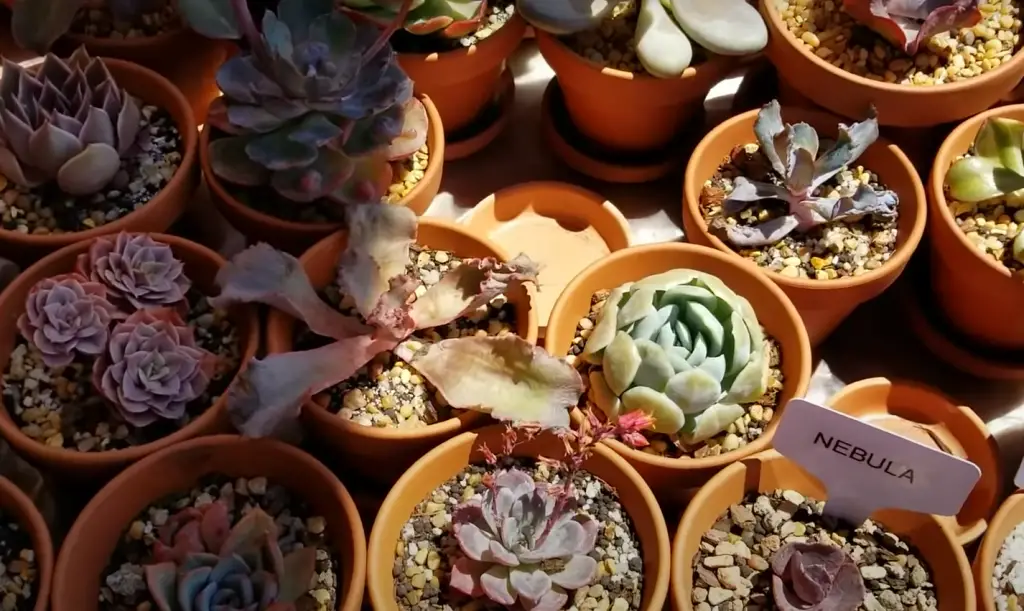
Once you’ve chosen a suitable spot, it’s time to pick your plants! Look for succulents that are hardy enough to withstand cooler temperatures and make sure they’re compatible with the climate of your region. Succulents such as sedum, hens and chicks, and agave are good choices for most areas.
The Best Soil for Planting Succulents Outside
The best soil for planting succulents outside should be light and airy with good drainage.
You can purchase a succulent-specific potting mix or create your own blend of equal parts sand, peat moss, and potting soil. Be sure to add some slow-release fertiliser to the mix before planting!
Outdoor Succulent Light and Temperature Needs
When it comes to outdoor succulents, light and temperature requirements should be taken into consideration. Succulents need plenty of bright sunlight in order to thrive, so choose a spot with at least six hours of direct sun each day.
In areas with northern climates, try planting your succulents near walls or other structures that can provide some protection from the cold.
Succulent Care Outdoors
Once your succulents are planted, it’s important to provide them with adequate care. Water the plants only when the soil is dry and be sure not to overwater as this can cause root rot.
In areas with hotter climates, you may need to water more frequently than usual.
Watering Outdoor Succulents
Watering outdoor succulents can be tricky as they need to be kept on the dry side. The best way to water them is by soaking the soil and then allowing it to completely dry out before watering again.
This prevents root rot from occurring due to overwatering. In very hot climates, you may need to water more frequently than usual or consider choosing drought-tolerant varieties.
Fertilising Outdoor Succulents
In order to keep your succulents healthy and thriving outdoors, it’s important to fertilise them.
Choose a fertiliser that is specifically formulated for cacti and succulents and apply the recommended amount as directed on the package. Be sure to water the plants before applying the fertiliser, as this will help ensure that it is absorbed into the soil.
Fertilise your succulents every few weeks in the summer and once or twice during the winter months.
Planting Succulents Outside: Container vs. In-Ground
When it comes to planting succulents outside, you have the option of planting them in containers or directly into the ground. Containers provide a great way to keep your plants from spreading too much and also make it easier to move your plants when needed.
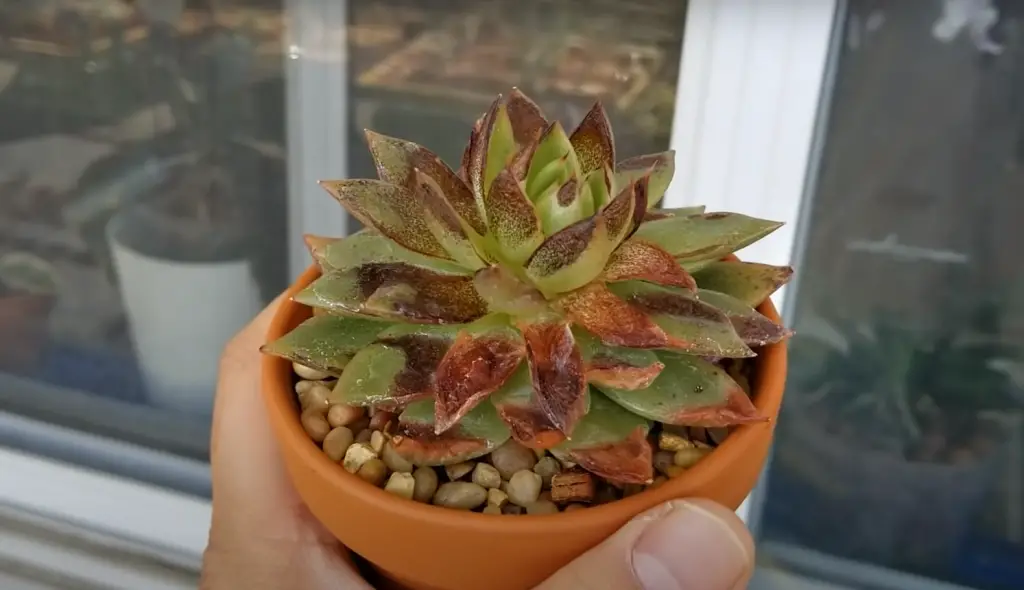
However, succulents can also be planted directly into the ground if they are hardy enough for your climate. Whichever method you choose, be sure to keep the plants in an area that receives plenty of sunlight and water them only when the soil is dry.
Recommended Outdoor Succulent Varieties
If you’re looking for outdoor succulent varieties that are hardy and easy to care for, consider trying some of the following: Sedum (like Autumn Joy), Agave americana, Echeveria, Sempervivum (Hens and Chicks), Aloe vera or Aeonium. All of these varieties can tolerate cooler temperatures and are easy to maintain.
With the right care, succulents can be a great addition to your outdoor space this summer! Whether you choose to plant them in containers or directly into the ground, their beauty and hardiness make them ideal for anyone who wants to add some interest to their garden.
Plus, they’re relatively low-maintenance plants that require minimal care. So if you’re looking for a low-effort way to add some life to your outdoor space, succulents are the perfect choice!
FAQ
How do you keep succulents alive outside?
In order to keep your succulents alive outside, make sure they are planted in an area that receives plenty of sunlight and provides water only when the soil is dry.
Additionally, you may need to cover them with burlap or a frost blanket during colder months depending on your climate. Fertilising your succulents every few weeks can also help keep them healthy and thriving.
Can succulents survive winter?
In many cases, yes! Succulents can be surprisingly hardy and can often survive cold winters depending on the climate.
To give your succulents a better chance of surviving, make sure they get enough sunlight throughout the year and consider covering them with burlap or a frost blanket during colder months. Additionally, try choosing hardy varieties that are better adapted to your local climate.
Can succulents survive outside in winter?
Again, this depends on your climate and the type of succulents you are growing. Many varieties can survive cold winters if they are in an area that receives plenty of sunlight and is provided with adequate protection during colder months.
For example, you may need to cover them with burlap or a frost blanket depending on your location and the temperatures you experience. Additionally, try choosing hardy varieties that are better adapted to your local climate.
Can succulents survive partial shade?
While full sun is ideal for growing succulents outside, many of them can still do well in partial shade. In fact, some varieties such as Sedum and Sempervivum actually prefer partial shade!
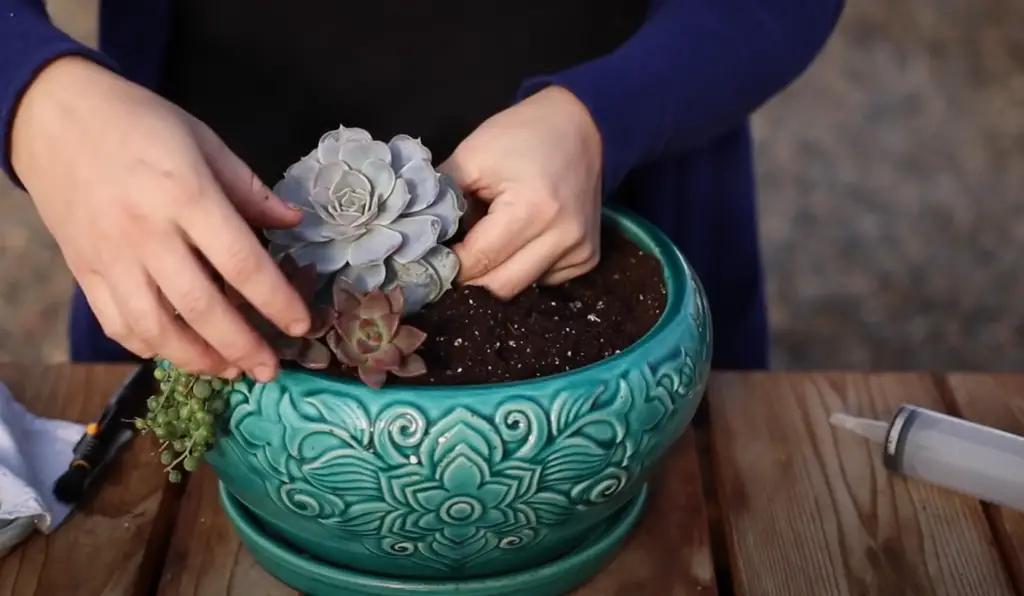
However, keep in mind that if they are kept in too much shade, they may not flower and may become spindly. If your succulents are in partial shade, be sure to water them more frequently than those in full sun. Additionally, consider adding some slow-release fertiliser to the soil to give them a boost.
Can succulents live outside in pots?
Yes! Succulents in pots are a great way to add some life and colour to your outdoor space. When planting them in containers, make sure you use potting soil designed for succulents and provide adequate drainage.
Additionally, keep an eye on the temperature as potted plants can heat up quickly during sunny days. Water the plants only when the soil is dry and fertilise regularly to help keep them healthy. With the right care, succulents can make beautiful additions to your outdoor space!
Can succulents live outdoors year-round?
In many cases, yes! However, this depends on your climate and the type of succulents you are growing. Some varieties such as Sedum and Sempervivum can survive cold winters if they are in an area that receives plenty of sunlight and is provided with adequate protection during colder months.
If temperatures dip below freezing, consider covering them with burlap or a frost blanket. Additionally, try choosing hardy varieties that are better adapted to your local climate. With the right care and protection, succulents can make beautiful outdoor additions all year round!
How cold is too cold for succulents?
This depends on the type of succulent you are growing, as some varieties can be more resilient than others.
If your region experiences freezing temperatures, consider covering them with burlap or a frost blanket to give them extra protection and help keep them healthy.
Do succulents need to stay inside?
No, succulents can in fact be planted outside and make great additions to any outdoor space. However, you’ll want to choose varieties that are hardy enough for your local climate and provide adequate protection during colder months if needed.

Additionally, be sure to keep the plants in an area that receives plenty of sunlight and water them only when the soil is dry. With the right care and protection, succulents can be a great way to add some life to your garden this summer!
What happens if succulents get too much sun?
If your succulents are in an area that receives too much direct sunlight, they may become sunburned. Sunburn occurs when the leaves of the plant turn a pale yellow or white colour and can cause permanent damage to the leaves.
To avoid this, make sure you choose a spot with plenty of sunlight but also some shade.
Additionally, ensure the soil gets adequate moisture and consider adding a slow-release fertiliser to give them an extra boost. With these simple steps, your succulents can stay healthy and vibrant all summer long!
What other plants go well with succulents?
Succulents look great when paired with a variety of other plants, both in the garden or indoors. Some great companion plants for succulents include cacti, aloe vera, hens and chicks, sedges, and even some grasses.
Additionally, pairing succulents with flowering annuals can add a pop of colour to your outdoor space and make it really stand out! With so many choices available, you can easily create a beautiful succulent garden that is both aesthetically pleasing and low maintenance.
What are the benefits of planting succulents?
There are many benefits to growing succulents, both indoors and out. These hardy plants require minimal maintenance, can survive in a variety of climates, and look beautiful when planted in containers or borders.
Additionally, they help improve air quality by absorbing carbon dioxide and releasing oxygen back into the atmosphere.
What are some tips for growing succulents?
The most important thing to consider when growing succulents is giving them the right amount of sunlight. Make sure they get at least six hours of direct sunlight each day, and if possible, choose an area that receives some shade during the hottest part of the day.
Additionally, water your succulents only when the soil is dry and consider fertilising them with a slow-release fertiliser. Finally, if temperatures dip below 10°C (50°F), cover the plants with burlap or a frost blanket for extra protection.
What are some common mistakes to avoid when growing succulents?
One of the most common mistakes people make when growing succulents is overwatering. Succulents are drought-tolerant and only need to be watered when the soil is dry. Overwatering can cause root rot, which can lead to plant death.
Additionally, avoid planting them in areas that receive too much direct sunlight, as this can cause the leaves to burn.
Finally, if temperatures drop below 10°C (50°F), make sure you provide them with extra protection to ensure they stay healthy during colder months.
How can I make my succulent garden look more attractive?
There are a few simple things you can do to give your succulent garden a more polished look. Consider adding texture and colour by pairing them with different types of plants such as cacti, aloe vera, hens and chicks, sedges or grasses.
Additionally, use containers of various shapes and sizes for added interest. Finally, consider laying down some mulch or pebbles in the area to help keep the soil moist and give your garden a neat and tidy look. With these simple steps, you can easily create an attractive succulent garden!
What should I do if my succulents start to die?
If your succulents start to die, the first thing you should do is assess their environment to make sure they are receiving adequate sunlight and water. If they are in an area that is too hot or cold, consider moving them to a more suitable spot.
Additionally, check for signs of root rot or pests, as these could be causing the plants to decline. Finally, if all else fails, try propagating them and see if that helps.
How do I propagate succulents?
Propagating succulents is a great way to increase your collection or revive dying plants. The most common methods of propagation are leaf cuttings and stem cuttings.
For leaf-cuttings, simply remove a healthy leaf from the main plant and place it on the soil, keeping in mind that the leaf should be completely dry before planting.
For stem-cuttings, remove a piece of stem with two or three leaves and allow it to callus (dry out) before planting in soil. With either method, make sure the cutting gets plenty of direct sunlight and water only when the soil is dry. Propagating succulents is a great way to keep your collection thriving and add some life to your garden!
How often should I water my succulents?
Succulents require very little water and should only be watered when the soil is completely dry. Generally, this means that your succulent should receive about one inch of water per week during the summer months.
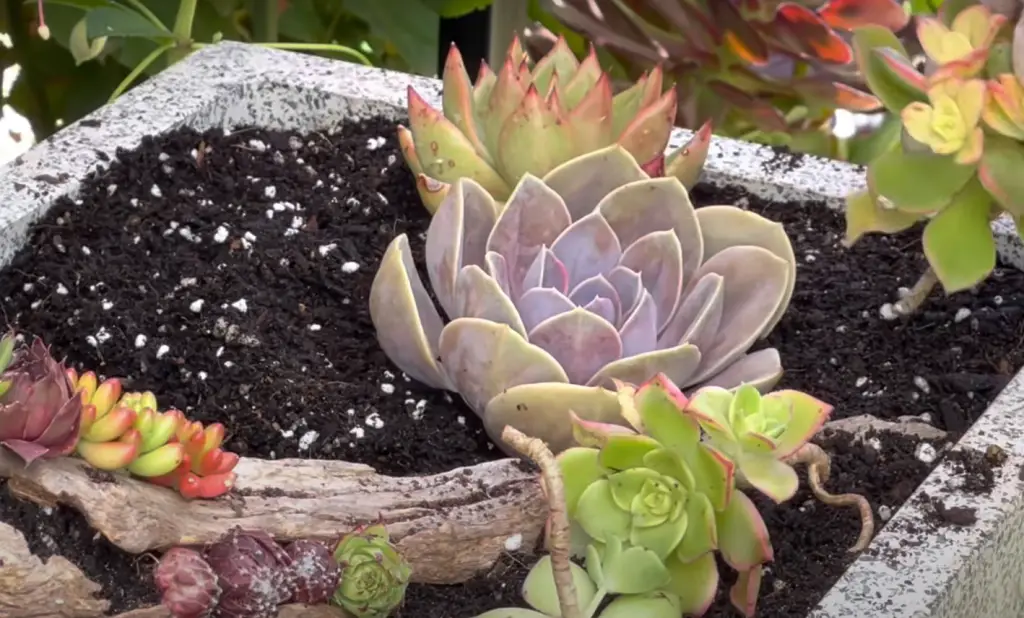
During colder months, reduce the watering frequency to every two or three weeks, allowing the soil to dry out between waterings.
Additionally, if you live in an area that receives a lot of rain, consider moving your succulents to a spot that is slightly sheltered from the elements.
How can I tell if my succulents are getting the right amount of sunlight?
It can be tricky to determine how much light your succulent is receiving, but there are a few telltale signs that will indicate whether or not they’re getting enough sun. Succulents that are getting too little sunlight may become leggy and weak, while those receiving too much may become sunburned or bleached.
Make sure to check your succulent regularly and adjust its position if needed, ensuring it receives at least six hours of direct sunlight each day.
Are there any special care requirements for winter?
Yes, it’s important to take extra precautions during the winter months to ensure your succulents stay healthy. Make sure to move them to an area that receives some shade during the hottest part of the day and provide them with extra protection if temperatures dip below 10°C (50°F).
Additionally, reduce watering frequency since succulents don’t need as much water during the colder months. Finally, consider applying a thin layer of mulch or pebbles around your succulents to help keep the soil moist and protect them from frost.
How should I store my succulents in the winter?
If you live in an area that experiences cold temperatures, it’s best to store your succulents indoors during the winter months. Make sure they are placed in a location that gets plenty of natural light and has good air circulation.
Additionally, reduce watering frequency as succulents don’t need as much water during the winter.
Finally, it’s important to monitor your succulents for signs of pests or diseases and treat them accordingly. With these simple tips, you can keep your succulents healthy throughout the cold months!
Does the type of soil I use make a difference?
Yes, the type of soil you use can have an impact on your succulents. Succulents prefer well-draining soil that is sandy, gritty and loamy. Additionally, consider adding organic matter to the soil for added nutrients and moisture retention.
Finally, avoid using potting mixes that contain peat or bark, as these can prevent water from draining properly. With the right type of soil, your succulents will be sure to thrive!
Does the type of container I use matter?
Yes, the type of containers you use can make a big difference in how healthy your succulents stay. Make sure to select containers that have adequate drainage holes so that excess water can escape.
Additionally, if you’re looking to give your succulent garden a more polished look, consider using different types and sizes of containers for added interest.
Finally, make sure to line the bottoms of your containers with a layer of stones or gravel to promote drainage and help keep the soil from becoming waterlogged.
Does fertilising my succulents help?
Yes, giving your succulents a light feeding of fertiliser every few months can help give them an extra boost. Make sure to select a fertiliser that is specifically formulated for succulents and cacti and follow the instructions on the package.
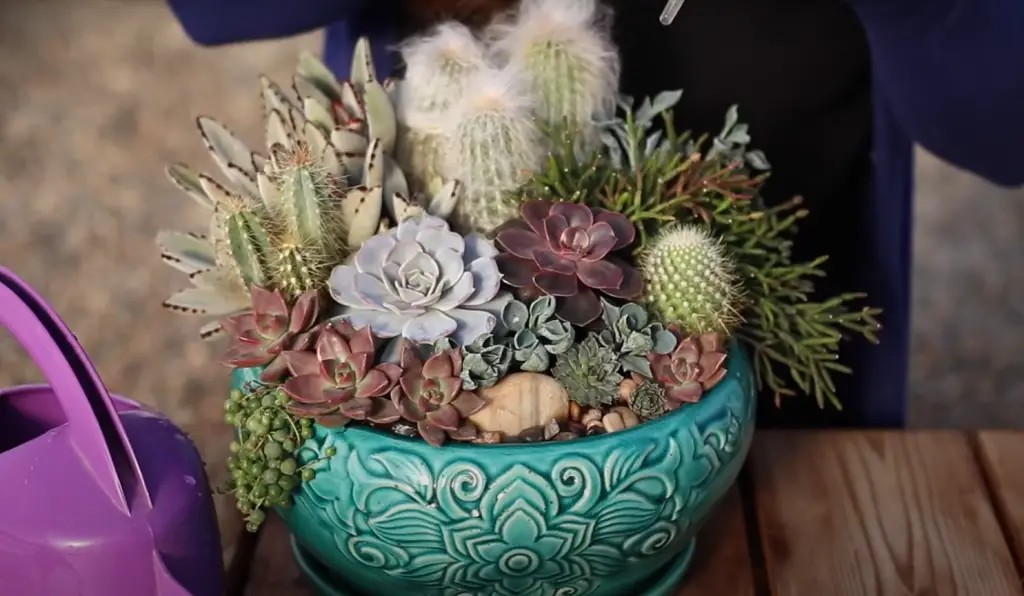
Additionally, consider using a slow-release fertiliser or compost tea as these will provide your plants with a steady supply of nutrients over an extended period. With the right fertiliser, you can ensure that your succulent garden stays healthy and vibrant for years to come!
How do I create an attractive succulent garden?
Creating an attractive succulent garden is easier than you might think! Start by selecting a variety of shapes, colours, textures, and sizes of succulents to create interest. Additionally, consider adding a few trailing plants or vines for added dimension.
Then, group your plants together in a way that is visually pleasing and make sure to leave some space between the individual plants. Finally, add stones or gravel for texture and colour and top it all off with a layer of organic mulch or compost.
Useful Video: Bringing Your Succulents Outside
Conclusion
Conclusively, succulents can live outside, but their overall health and lifespan depends on many factors. If you live in a warm region with adequate sunlight and good soil drainage systems, providing your hardy succulent with the right conditions could be a breeze!
Keeping the temperature moderate and allowing them a few days of full sun is the best way to ensure that they thrive during these times.
On the other hand, if you live in extreme climates where temperatures can dip down below freezing or areas that experience frequent storms then it is probably better to keep your succulents indoors where they are safe from environmental changes.
Finally, for those with green thumbs, there’s always the option to create custom hybrid succulents that may thrive outdoors or experiment with artificial environments like terrariums. The choices are limitless and always interesting when it comes to succulents!
References:
- https://kellogggarden.com/blog/gardening/can-succulents-live-outside/










Leave a Reply
View Comments